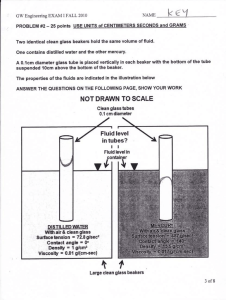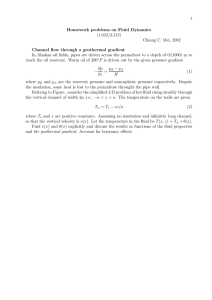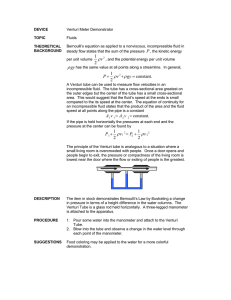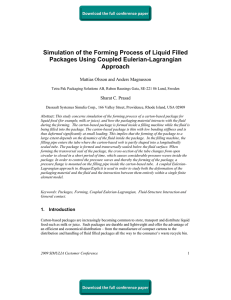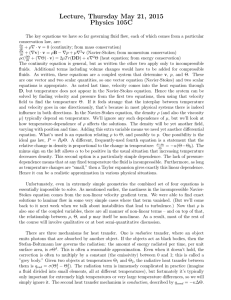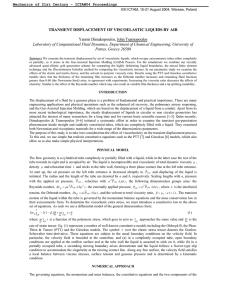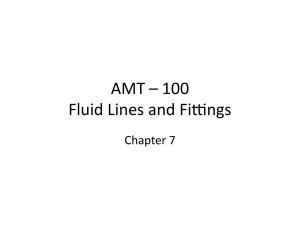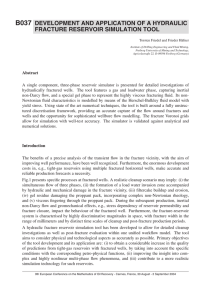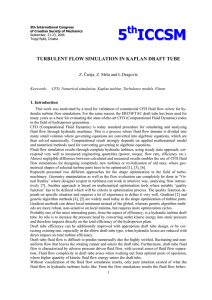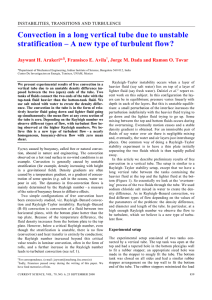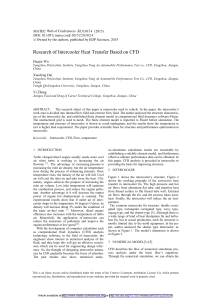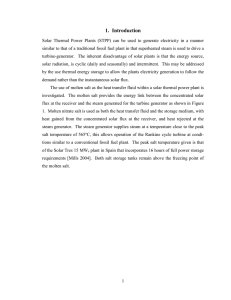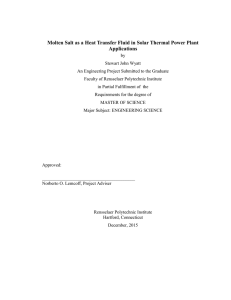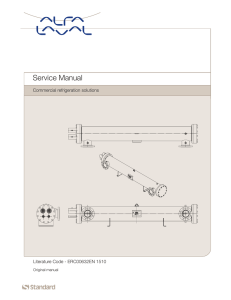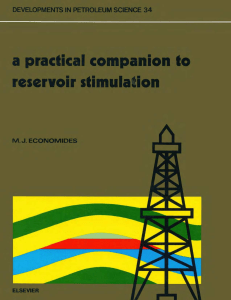1 Homework problems on Fluid Dynamics (1.63J/2.21J) Chiang C. Mei, 2002
advertisement
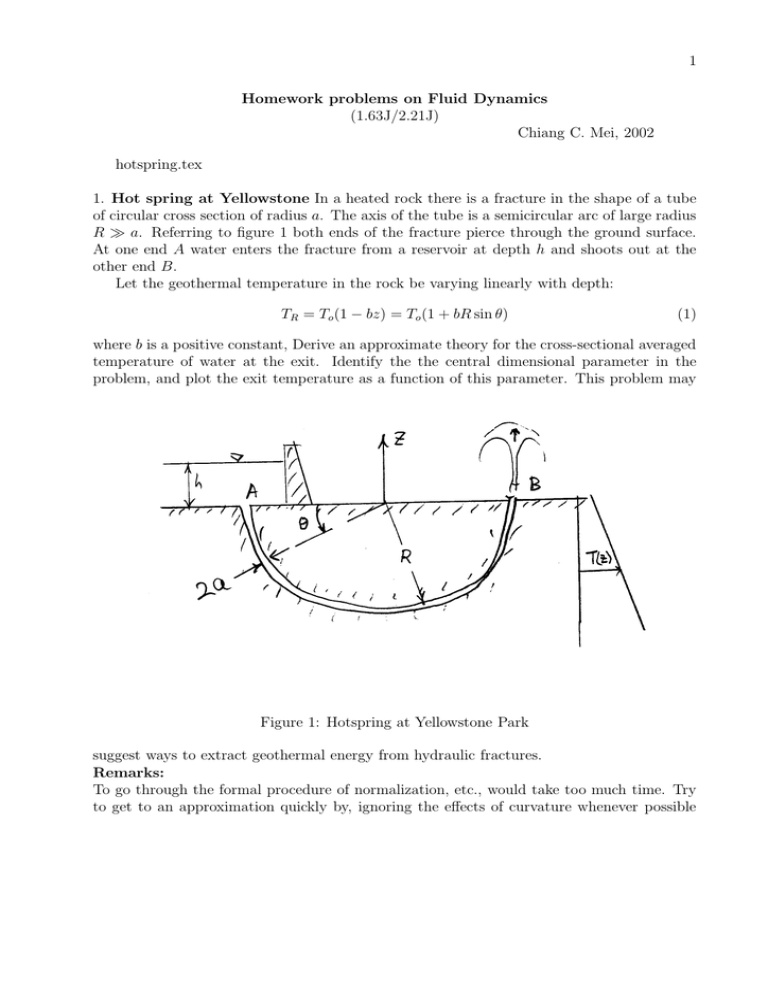
1 Homework problems on Fluid Dynamics (1.63J/2.21J) Chiang C. Mei, 2002 hotspring.tex 1. Hot spring at Yellowstone In a heated rock there is a fracture in the shape of a tube of circular cross section of radius a. The axis of the tube is a semicircular arc of large radius R a. Referring to figure 1 both ends of the fracture pierce through the ground surface. At one end A water enters the fracture from a reservoir at depth h and shoots out at the other end B. Let the geothermal temperature in the rock be varying linearly with depth: TR = To (1 − bz) = To (1 + bR sin θ) (1) where b is a positive constant, Derive an approximate theory for the cross-sectional averaged temperature of water at the exit. Identify the the central dimensional parameter in the problem, and plot the exit temperature as a function of this parameter. This problem may Figure 1: Hotspring at Yellowstone Park suggest ways to extract geothermal energy from hydraulic fractures. Remarks: To go through the formal procedure of normalization, etc., would take too much time. Try to get to an approximation quickly by, ignoring the effects of curvature whenever possible 2 (since a/R 1), assuming that the flow is driven by pressure gradient alone, but the fluid temperature in the crack depends on the flow. Suggested steps • Ignore the curvature of the tube, find the velocity distribution uθ (r) in the tube due to the pressure head difference ρgh. • Let the fluid temperature be Tf (r, θ) = TR (θ) + T 0 (r, θ) (2) Invoke linearity if necessary and solve first for the radial dependence of T 0 , then take the cross-sectional average, e.g., 1 T̄f ≡ 2 πa Z a 0 2πrTf dr (3) • Use integrated energy balance to derive a differential equation for T̄f . • Recall that the ODE dy + hy = g(x) dx can always be solved by rewriting it as e−hx d hx ye = g(x) dx (4) (5)

